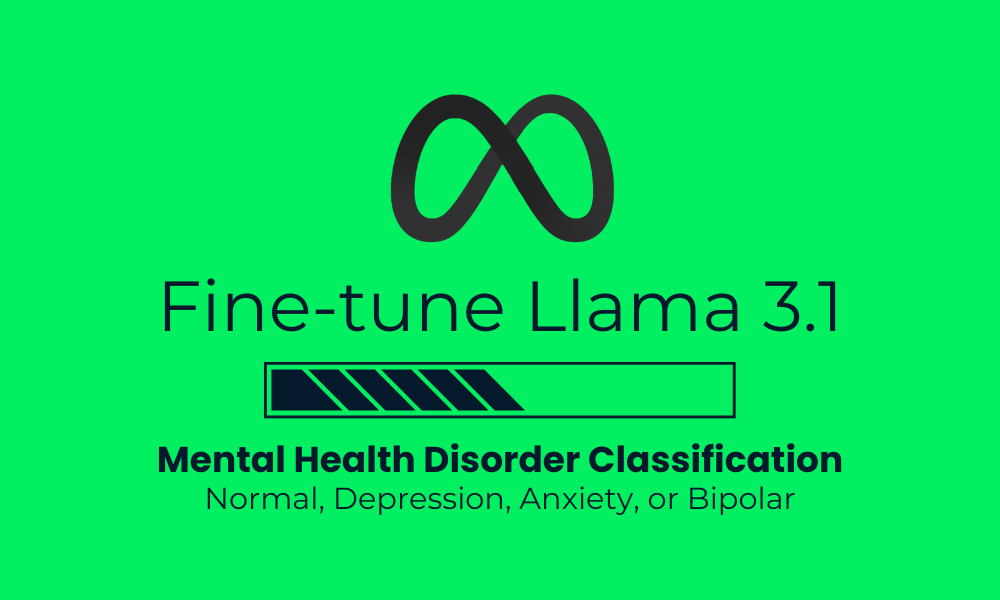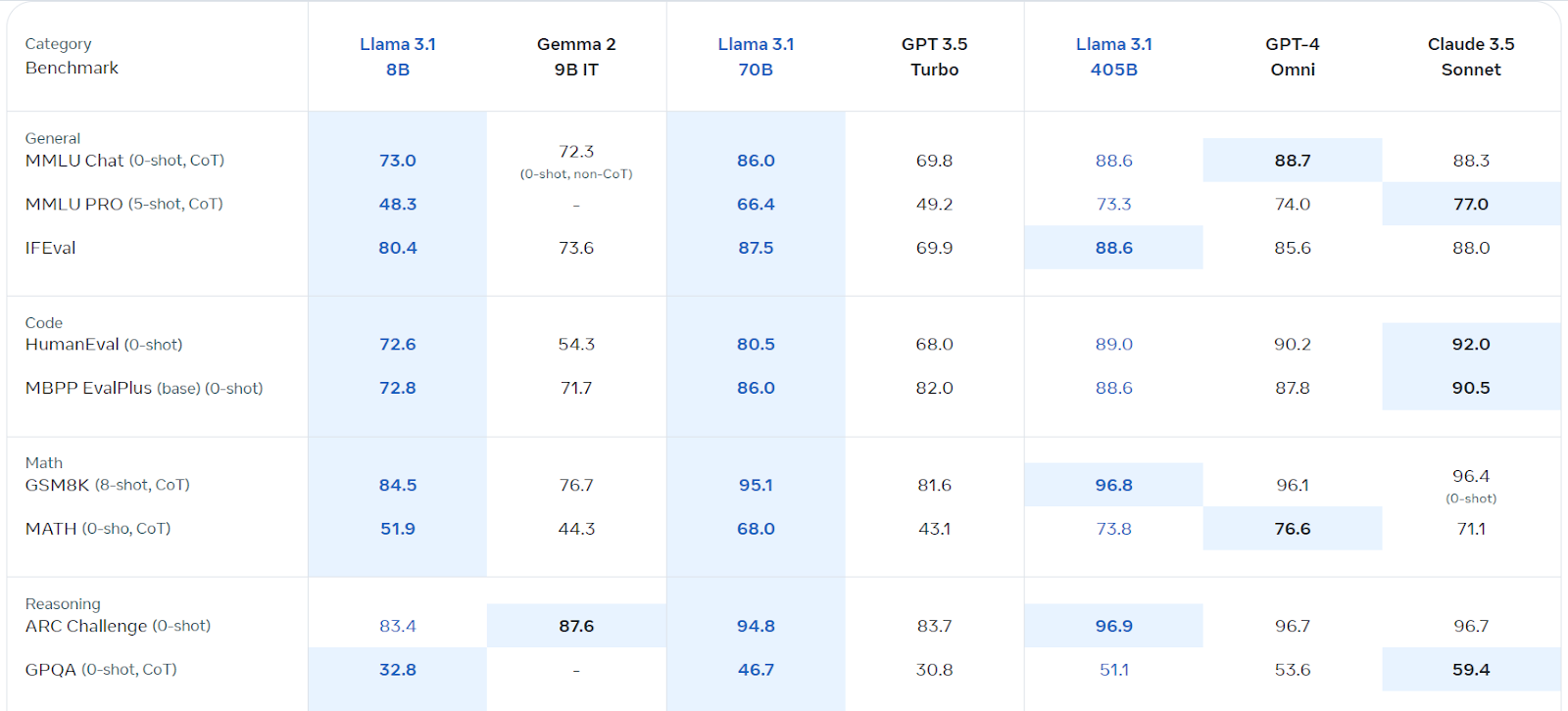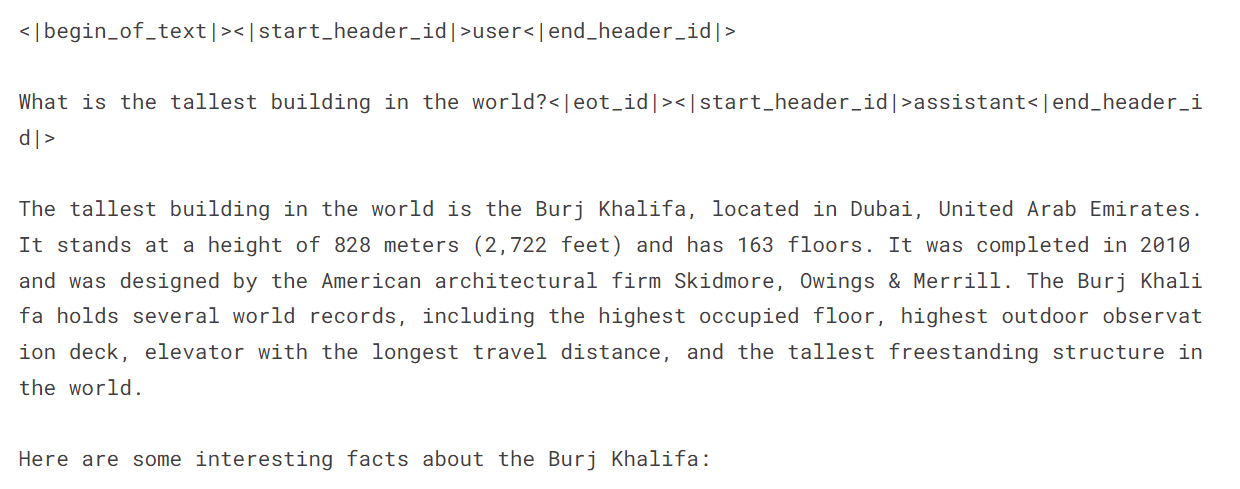This tutorial demonstrates fine-tuning the Llama 3.1-8b-It model for mental health sentiment analysis. We'll customize the model to predict patient mental health status from text data, merge the adapter with the base model, and deploy the complete model on the Hugging Face Hub. Crucially, remember that ethical considerations are paramount when using AI in healthcare; this example is for illustrative purposes only.
We'll cover accessing Llama 3.1 models via Kaggle, using the Transformers library for inference, and the fine-tuning process itself. A prior understanding of LLM fine-tuning (see our "An Introductory Guide to Fine-Tuning LLMs") is beneficial.

Image by Author
Understanding Llama 3.1
Llama 3.1, Meta AI's multilingual large language model (LLM), excels in language understanding and generation. Available in 8B, 70B, and 405B parameter versions, it's built on an auto-regressive architecture with optimized transformers. Trained on diverse public data, it supports eight languages and boasts a 128k context length. Its commercial license is readily accessible, and it outperforms several competitors in various benchmarks.

Source: Llama 3.1 (meta.com)
Accessing and Using Llama 3.1 on Kaggle
We'll leverage Kaggle's free GPUs/TPUs. Follow these steps:
- Register on meta.com (using your Kaggle email).
- Access the Llama 3.1 Kaggle repository and request model access.
- Launch a Kaggle notebook using the provided "Code" button.
- Select your preferred model version and add it to the notebook.
- Install necessary packages (
%pip install -U transformers accelerate). - Load the model and tokenizer:
from transformers import AutoTokenizer, AutoModelForCausalLM, pipeline
import torch
base_model = "/kaggle/input/llama-3.1/transformers/8b-instruct/1"
tokenizer = AutoTokenizer.from_pretrained(base_model)
model = AutoModelForCausalLM.from_pretrained(base_model, return_dict=True, low_cpu_mem_usage=True, torch_dtype=torch.float16, device_map="auto", trust_remote_code=True)
pipe = pipeline("text-generation", model=model, tokenizer=tokenizer, torch_dtype=torch.float16, device_map="auto")
- Create prompts and run inference:
messages = [{"role": "user", "content": "What is the tallest building in the world?"}]
prompt = tokenizer.apply_chat_template(messages, tokenize=False, add_generation_prompt=True)
outputs = pipe(prompt, max_new_tokens=120, do_sample=True)
print(outputs[0]["generated_text"])

Fine-tuning Llama 3.1 for Mental Health Classification
-
Setup: Start a new Kaggle notebook with Llama 3.1, install required packages (
bitsandbytes,transformers,accelerate,peft,trl), and add the "Sentiment Analysis for Mental Health" dataset. Configure Weights & Biases (using your API key). -
Data Processing: Load the dataset, clean it (removing ambiguous categories: "Suicidal," "Stress," "Personality Disorder"), shuffle, and split into training, evaluation, and testing sets (using 3000 samples for efficiency). Create prompts incorporating statements and labels.
-
Model Loading: Load the Llama-3.1-8b-instruct model using 4-bit quantization for memory efficiency. Load the tokenizer and set the pad token ID.
-
Pre-Fine-tuning Evaluation: Create functions to predict labels and evaluate model performance (accuracy, classification report, confusion matrix). Assess the model's baseline performance before fine-tuning.
-
Fine-tuning: Configure LoRA using appropriate parameters. Set up training arguments (adjust as needed for your environment). Train the model using
SFTTrainer. Monitor progress using Weights & Biases. -
Post-Fine-tuning Evaluation: Re-evaluate the model's performance after fine-tuning.
-
Merging and Saving: In a new Kaggle notebook, merge the fine-tuned adapter with the base model using
PeftModel.from_pretrained()andmodel.merge_and_unload(). Test the merged model. Save and push the final model and tokenizer to the Hugging Face Hub.
Remember to replace placeholders like /kaggle/input/... with your actual file paths. The complete code and detailed explanations are available in the original, longer response. This condensed version provides a high-level overview and key code snippets. Always prioritize ethical considerations when working with sensitive data.
The above is the detailed content of Fine-Tuning Llama 3.1 for Text Classification. For more information, please follow other related articles on the PHP Chinese website!

Hot AI Tools

Undress AI Tool
Undress images for free

Undresser.AI Undress
AI-powered app for creating realistic nude photos

AI Clothes Remover
Online AI tool for removing clothes from photos.

Clothoff.io
AI clothes remover

Video Face Swap
Swap faces in any video effortlessly with our completely free AI face swap tool!

Hot Article

Hot Tools

Notepad++7.3.1
Easy-to-use and free code editor

SublimeText3 Chinese version
Chinese version, very easy to use

Zend Studio 13.0.1
Powerful PHP integrated development environment

Dreamweaver CS6
Visual web development tools

SublimeText3 Mac version
God-level code editing software (SublimeText3)
 Kimi K2: The Most Powerful Open-Source Agentic Model
Jul 12, 2025 am 09:16 AM
Kimi K2: The Most Powerful Open-Source Agentic Model
Jul 12, 2025 am 09:16 AM
Remember the flood of open-source Chinese models that disrupted the GenAI industry earlier this year? While DeepSeek took most of the headlines, Kimi K1.5 was one of the prominent names in the list. And the model was quite cool.
 Grok 4 vs Claude 4: Which is Better?
Jul 12, 2025 am 09:37 AM
Grok 4 vs Claude 4: Which is Better?
Jul 12, 2025 am 09:37 AM
By mid-2025, the AI “arms race” is heating up, and xAI and Anthropic have both released their flagship models, Grok 4 and Claude 4. These two models are at opposite ends of the design philosophy and deployment platform, yet they
 10 Amazing Humanoid Robots Already Walking Among Us Today
Jul 16, 2025 am 11:12 AM
10 Amazing Humanoid Robots Already Walking Among Us Today
Jul 16, 2025 am 11:12 AM
But we probably won’t have to wait even 10 years to see one. In fact, what could be considered the first wave of truly useful, human-like machines is already here. Recent years have seen a number of prototypes and production models stepping out of t
 Context Engineering is the 'New' Prompt Engineering
Jul 12, 2025 am 09:33 AM
Context Engineering is the 'New' Prompt Engineering
Jul 12, 2025 am 09:33 AM
Until the previous year, prompt engineering was regarded a crucial skill for interacting with large language models (LLMs). Recently, however, LLMs have significantly advanced in their reasoning and comprehension abilities. Naturally, our expectation
 6 Tasks Manus AI Can Do in Minutes
Jul 06, 2025 am 09:29 AM
6 Tasks Manus AI Can Do in Minutes
Jul 06, 2025 am 09:29 AM
I am sure you must know about the general AI agent, Manus. It was launched a few months ago, and over the months, they have added several new features to their system. Now, you can generate videos, create websites, and do much mo
 Build a LangChain Fitness Coach: Your AI Personal Trainer
Jul 05, 2025 am 09:06 AM
Build a LangChain Fitness Coach: Your AI Personal Trainer
Jul 05, 2025 am 09:06 AM
Many individuals hit the gym with passion and believe they are on the right path to achieving their fitness goals. But the results aren’t there due to poor diet planning and a lack of direction. Hiring a personal trainer al
 Leia's Immersity Mobile App Brings 3D Depth To Everyday Photos
Jul 09, 2025 am 11:17 AM
Leia's Immersity Mobile App Brings 3D Depth To Everyday Photos
Jul 09, 2025 am 11:17 AM
Built on Leia’s proprietary Neural Depth Engine, the app processes still images and adds natural depth along with simulated motion—such as pans, zooms, and parallax effects—to create short video reels that give the impression of stepping into the sce
 These AI Models Didn't Learn Language, They Learned Strategy
Jul 09, 2025 am 11:16 AM
These AI Models Didn't Learn Language, They Learned Strategy
Jul 09, 2025 am 11:16 AM
A new study from researchers at King’s College London and the University of Oxford shares results of what happened when OpenAI, Google and Anthropic were thrown together in a cutthroat competition based on the iterated prisoner's dilemma. This was no






